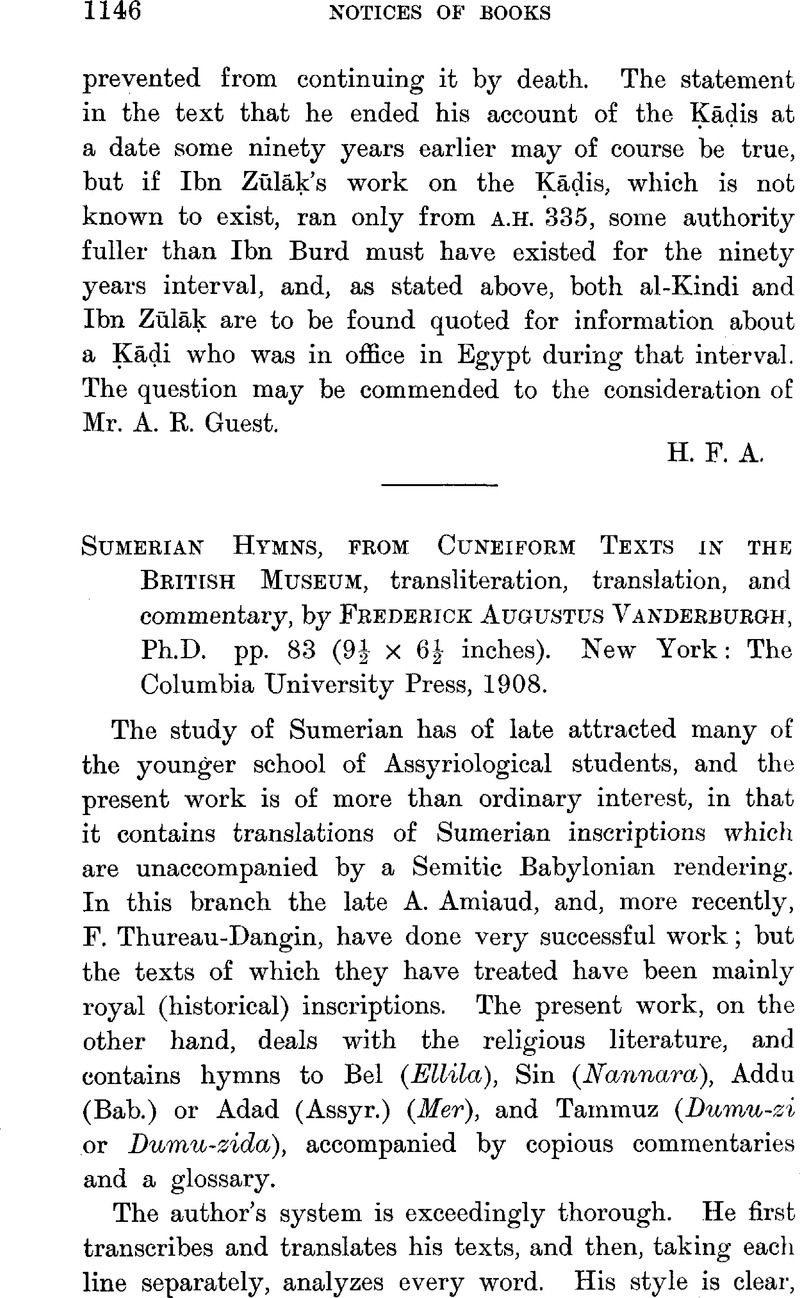No CrossRef data available.
Article contents
Sumerian Hymns, from Cuneiform Texts in the British Museum, transliteration, translation, and commentary, by Frederick Augustus Vanderburgh, Ph.D. pp. 83 (9½ × 6½ inches). New York: The Columbia University Press, 1908.
Published online by Cambridge University Press: 15 March 2011
Abstract

- Type
- Notices of Books
- Information
- Copyright
- Copyright © The Royal Asiatic Society 1909
References
page 1148 note 1 Most Assyriologists, however, will probably prefer another explanation, ![]() stands for Rammānu, and, with the pronunciation of ni, for ramānu, “self,” not because of the likeness between these two words (which are probably not connected in Semitic Babylonian), but because
stands for Rammānu, and, with the pronunciation of ni, for ramānu, “self,” not because of the likeness between these two words (which are probably not connected in Semitic Babylonian), but because ![]() means “wind”
means “wind” ![]() , and apparently also “breath”, and can likewise naturally stand for “person”, “self”.
, and apparently also “breath”, and can likewise naturally stand for “person”, “self”.
page 1148 note 2 My first reading of ![]() was i-ne, dialectic form of igi, “eye.” Professor Haupt, however, read it ide. Later on my first reading was adopted, and seems to be supported by the group
was i-ne, dialectic form of igi, “eye.” Professor Haupt, however, read it ide. Later on my first reading was adopted, and seems to be supported by the group ![]() the second and third characters of which are glossed by
the second and third characters of which are glossed by ![]() making for the whole
making for the whole ![]() on the fragment 81–4–28, 927. The author has ide.
on the fragment 81–4–28, 927. The author has ide.




